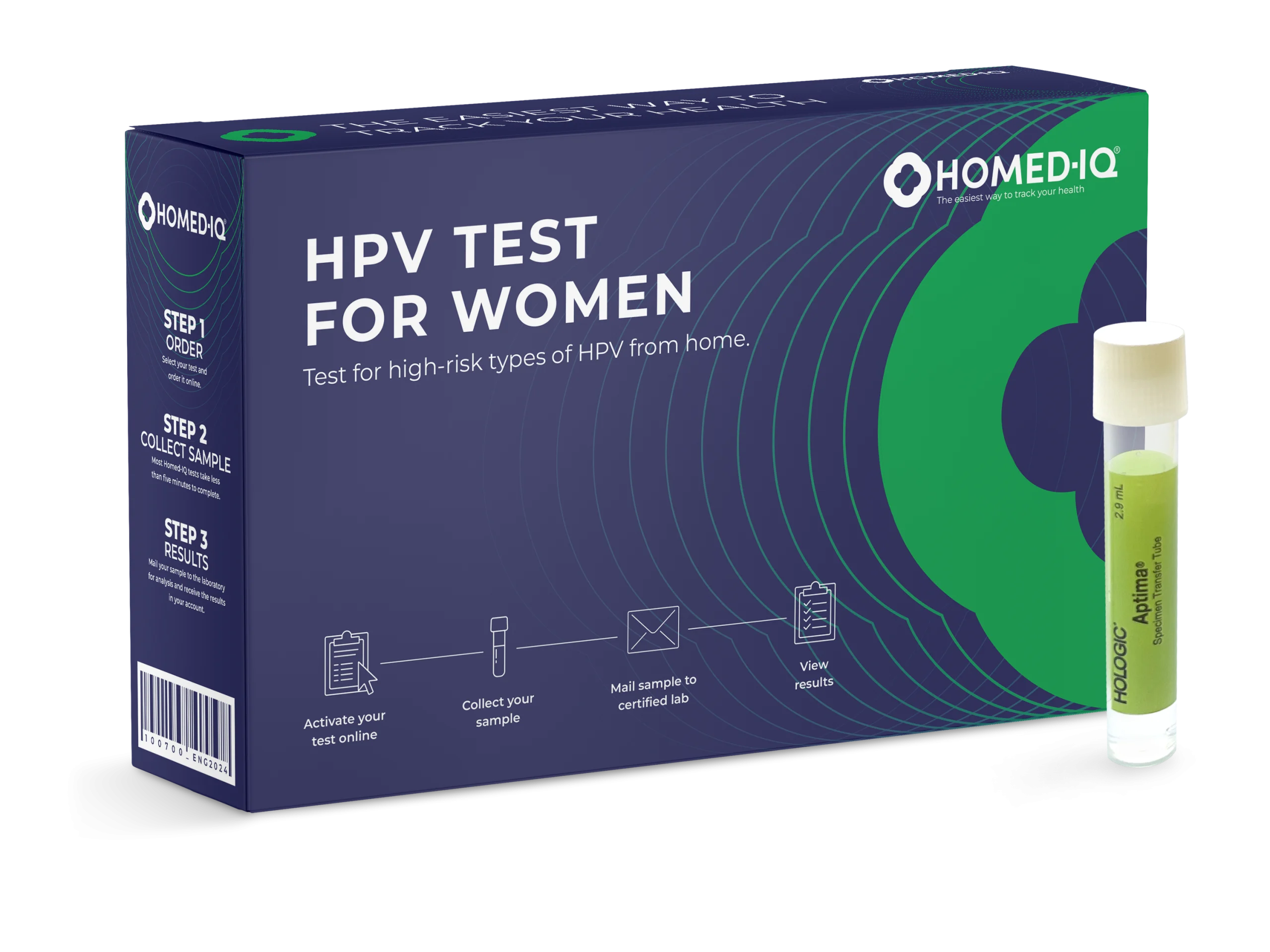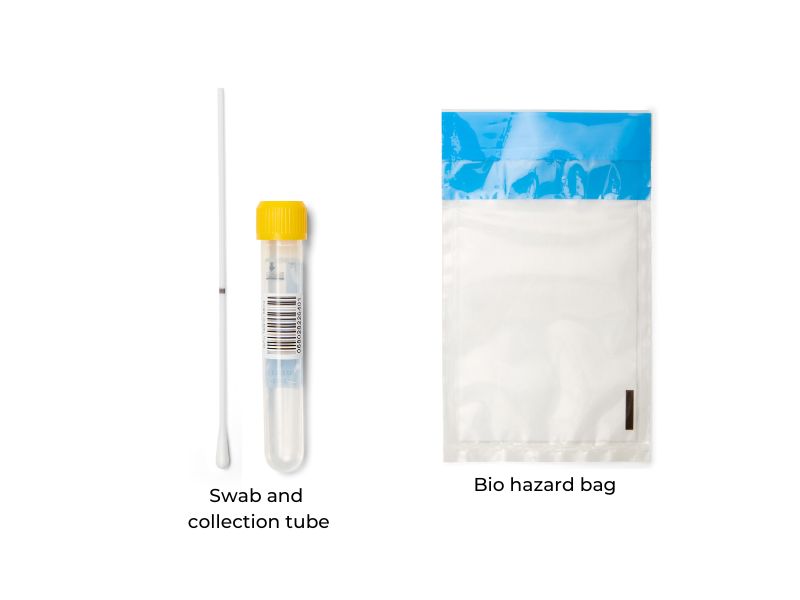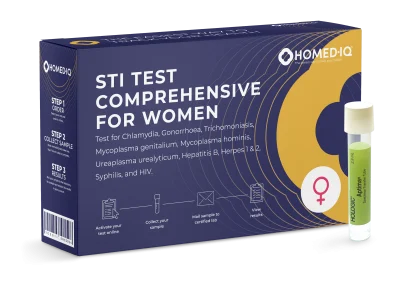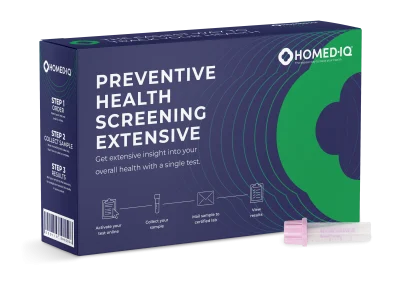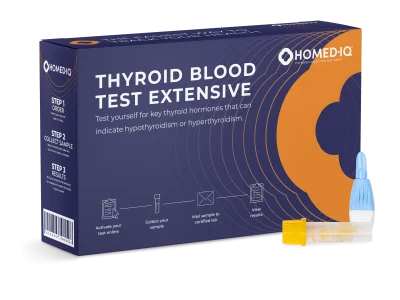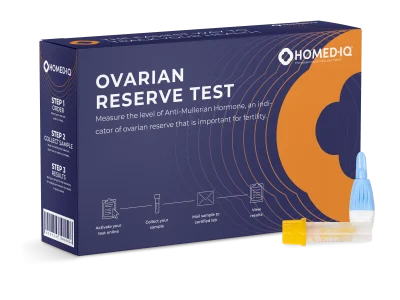

HPV Test for Women
€79,00 Free Shipping
Homed-IQ’s HPV Test is a screening test for cervical cancer in women. The test doesn’t tell you whether you have cancer, but detects the presence of Human Papillomavirus (HPV), the virus that causes cervical cancer. HPV is the most common sexually transmitted infection in the world, and while most infections clear themselves over time, some can persist in the body and cause health problems. Some types of HPV may cause warts or no symptoms at all. However, certain high-risk types of HPV can cause changes in the cells of the cervix, which can lead to cervical cancer. This at-home test checks for high-risk types of HPV in women that can cause cervical cancer.
Test Mode: Vaginal Swab
What do we test for?
About HPV 16
HPV 16, also known as Human Papillomavirus type 16, is one of the many types of the human papillomavirus (HPV). It is a sexually transmitted infection that primarily affects the genital and anal regions. HPV 16 is considered a high-risk type of HPV due to its association with the development of certain types of cancer, notably cervical cancer, as well as other cancers like anal, vaginal, vulvar, penile, and oropharyngeal cancer. While in many cases the body's immune system can clear an HPV infection naturally over time, persistent infections with high-risk HPV strains, such as HPV 16, can lead to cellular changes that may develop into cancer if left untreated. The HPV vaccine protects against several high-risk forms of HPV, including type 16.
About HPV 18
HPV 18, also referred to as Human Papillomavirus type 18, belongs to the group of human papillomavirus (HPV) strains. This sexually transmitted infection primarily affects the genital and anal regions and can be spread through sex or close skin-to-skin contact. HPV 18 is classified as a high-risk type of HPV due to its strong association with certain cancers, notably cervical cancer, as well as other cancers like anal, vaginal, vulvar, penile, and oropharyngeal cancer. While most HPV infections clear naturally over time through the body's immune response, persistent infections with high-risk strains, such as HPV 18, can lead to cellular changes that may progress to cancer if left untreated. The HPV vaccine offers protection against several high-risk HPV types, including HPV 18.
About Other high-risk HPV types: 31, 33, 35, 39, 45, 51, 52, 56, 58, 59, 66, 68
HPV types 16 and 18 cause most types of HPV-related cancers, and therefore are considered the highest risk types of HPV. Other high-risk types of HPV are strains of the human papillomavirus that are also associated with an increased risk of developing certain types of cancer. These high-risk types differ from low-risk HPV types, which are not associated with cancer but may cause genital warts. HPV vaccination protects against most types of high-risk HPV, as well as the most common types that cause genital warts.
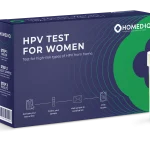
€79,00 Free Shipping

What is a HPV Test?
This test checks for high risk types of HPV, including the most high-risk types: type 16 and 18. HPV often has no symptoms and is spread through sexual contact, even if barriers like condoms are used. Most people will have an HPV infection in their lifetime without knowing it. This infection most often clears up on its own, although it is possible to be infected for life. Some people may experience genital warts from an HPV infection. The types of HPV that cause genital warts are not the same types associated with cancer. Vaccination is the most effective protection against HPV, providing nearly 100% protection from the most high-risk HPV types. However, vaccination does not protect against all high risk types and protection is not 100% in all individuals (NIH, 2021). Therefore, testing is still recommended in vaccinated individuals.
This simple test can determine if you are positive for high-risk types of HPV. This is a vaginal swab test that you can easily take from home. Your sample will then be examined by a certified laboratory and you will receive the results within a matter of days. It couldn’t be easier!
Is a HPV test the same as Pap smear?
An HPV test and Pap smear are slightly different. During a Pap smear, health care providers scrape cells from the surface of the cervix and analyze them under a microscope for abnormal cells that could turn into cervical cancer. An HPV test, on the other hand, detects the presence of HPV DNA from cervical cells that are collected using a swab. While a Pap smear can only be performed by a healthcare provider, an HPV test can be performed either at home or in the doctor’s office. HPV strains 16 and 18 are responsible for about 70% of cervical cancer cases.
Is there a difference between high and low-risk HPV?
There are more than 100 different types of HPV. These different types are grouped into two categories: low-risk and high-risk. Low-risk HPV types can cause genital warts, but are not known to cause cancer. A high-risk HPV infection can lead to cervical cancer-or cancer of the vagina, vulva, or anus.
HPV
Human Papillomavirus (HPV) is a highly contagious virus. HPV is spread through sexual contact or touching through the hands, mouth, penis, or vagina. Almost everyone is infected with HPV at some point- almost 80% of sexually active individuals will come into contact with HPV in their lifetime. There are many different types of HPV. Some can cause genital warts or no disease at all, and are known as low-risk HPV. Other types of HPV can cause cancer and are called high-risk HPV. While there are several types of high-risk HPV, types 16 and 18 cause the majority of HPV-related cancers.
Most people with HPV have no symptoms at all. Furthermore, testing for HPV is only widely available to women and often only checks for high-risk HPV as a form of cervical cancer screening. This means HPV is easily passed to other people unknowingly. While there is no cure for HPV, your body usually clears the virus on its own within two years. In some cases, the virus does not clear and remains in the body for a long time. A long-term infection with high-risk HPV can cause cell changes that lead to cancer. High-risk HPV is associated with cancers of the cervix, vulva, vagina, head and neck, penis, and anus.
Preventing HPV
The best protection against HPV is vaccination. Since testing for HPV is limited and it can spread even during safe sex, preventing HPV infections before they occur is important. Vaccination against HPV protects against the most dangerous types of high-risk HPV, as well as the low-risk HPV types that most commonly cause genital warts. It is important to note that vaccination does not provide 100% protection against HPV-related cancers. That is why women in many countries are invited to take part in screening for cervical cancer using a combination of 1) an HPV Test that checks for HPV infections and 2) a Pap smear that checks for HPV-related cell changes in the cervix.
Who should use this test?
It’s recommended that you screen for HPV if you’re over 30 years old and want to understand your potential risk for cervical cancer. Frequency of testing varies between countries, but is typically recommended every 3 to 5 years.
Why isn’t HPV testing recommended for younger women?
HPV can resolve itself on its own, which is why testing is not recommended for women under the age of 25. The risk of developing cervical cancer under the age of 25 is extremely rare (Cancer Research UK, 2022). It takes approximately 10 to 15 years for an HPV infection to develop into cervical cancer in women with normal immune systems. However, women over the age of 30 with a high-risk HPV infection are at an increased risk of developing cervical cancer. According to the WHO, in 2020 over 342.000 women died from cervical cancer (WHO, 2022). This is why the current guidelines for population HPV testing in most countries are between the age of 25 and 35.
Testing HPV in younger women can lead to overdiagnosis and overtreatment, in which women are diagnosed with and treated for HPV related cell changes that would have never caused any health problems and resolved on their own. Harms associated with overtreating HPV are the fear and anxiety caused by a high risk HPV diagnosis, as well as the physical harms from potential procedures to remove abnormal cells that may have resolved on their own.
Why did the guidelines regarding testing younger women for HPV change?
In the past and in other countries, HPV screening was recommended for women in their teens and early 20s who were sexually active. Since the introduction of HPV vaccination, rates of HPV in young women have dramatically decreased. New research indicates that the benefits associated with HPV testing do not outweigh the harms in women under age 25 (NIH, 2020), leading to a change in testing guidelines. These guidelines may change in the future as more people are vaccinated and HPV prevalence decreases.
Who should not use this test?
This test is meant to screen for high risk types of HPV in order to help prevent or catch cervical cancer early. This test is not suitable for individuals who:
- Are already experiencing symptoms that may be associated with cervical cancer or other problems.
- Are already in the care of a gynecologist for cervical problems
- Have had their cervix removed
If you are experiencing these symptoms, please contact your GP directly for further care:
- Bleeding between periods or after menopause
- Menstrual bleeding that is longer or heavier than usual
- Pain during intercourse
- Bleeding after intercourse
- Pelvic pain
- A change in your vaginal discharge, such as more discharge or a strong or unusual colour/smell
Symptoms of low-risk HPV
Low risk HPV can cause genital warts around the vagina, penis, anus, and sometimes mouth/throat. They can cause itching, irritation, or bleeding.
Symptoms of high-risk HPV
High risk HPV usually has no initial symptoms and may clear up on its own. However, if the virus remains within the body for many years, infected cells can change and begin to divide uncontrollably, causing cancer. Testing can identify high-risk HPV infections and allow for further testing and preventive procedures to help prevent cancer before it occurs. High-risk HPV is most commonly associated with cervical cancer. However, it can also cause vaginal and vulvar cancer in women, penile cancer in men, and anal and oropharyngeal (the back of the throat and tongue) cancers in both women and men. This is why both vaccination and testing for high-risk HPV is important in order to catch potential cancers early.
Symptoms of Genital Warts (low-risk HPV):
- Itching, burning, or tenderness around the area of infection.
- Raised, flesh-colored lumps or bumps that may have a cauliflower-like appearance.
Genital warts may appear anywhere on body’s skin that is exposed during sexual contact.
HPV test results
This test is able to specifically identify the two highest risk types of HPV: types 16 and 18. The test is also able to detect 12 other HPV types (31, 33, 35, 39, 45, 51, 52, 56, 58, 59, 66, 68). While these types of HPV can potentially cause cancer, the risk is lower than types 16 and 18.
The results of your test will either be negative or positive. A negative test result means that no form of high risk HPV has been found. This does not mean you do not have any form of low-risk HPV, as there are many other possible types of HPV that this method does not test for. Additionally, this test is not a substitute for regular Pap smears conducted by a medical professional, in line with local cervical cancer screening programs.
What should I do if my test is positive?
A positive test result indicates the presence of one or more high risk HPV types. A positive test result does not mean that you have cervical cancer, as many high-risk HPV infections resolve themselves on their own. A positive test result requires follow-up with your GP to discuss whether additional testing or treatment is needed.
I tested positive. Am I going to get cervical cancer?
It can be scary to test positive for HPV. However, please know that HPV is highly common and almost everyone is infected with it at some point. Additionally, many HPV infections clear themselves on their own, with time. Despite testing positive, your body may eventually clear the infection. Even if this does not happen, being aware of your HPV status allows you to engage with preventive care that can stop cervical cancer before it occurs.
Most individuals that test positive for high-risk HPV will never develop cervical cancer. However, if your test result is positive, please contact your GP for follow-up.
Tip: also read our article “Understanding HPV and cancer”.
